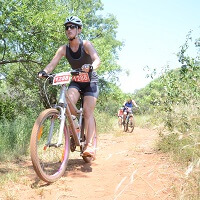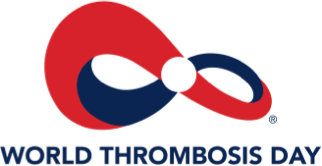Marie-Victoire Cumming
Pretoria, South Africa
Marie-Victoire Cumming is an athlete. She likes to test her strength in new and exciting challenges like long-distance cycling, running and swimming, but she never expected one of her biggest challenges would be diagnosing and overcoming a blood clot.
In May of 2014, at the age of 27, Marie-Victoire was competing in a high-intensity obstacle course race when she fractured her ankle. After a surgical procedure to repair the damage, which left her leg in a cast, Marie-Victoire began to feel discomfort in her calf, but she attributed the pain to the surgery at first.
“I didn’t think much of it,” Marie-Victoire says. “I just thought it was muscle cramps or something. But for the remainder of the day, the pain didn’t subside, and I felt like I needed to lie down and put some ice on the cast to help with swelling.”
As the pain continued to build, Marie-Victoire called a friend who was a physical therapist, but her friend assured her that someone as young and healthy as Marie-Victoire should be fine in due time.
However, the pain intensified over the day and night. “It was like a claustrophobic feeling,” Marie-Victoire says. “I just wanted to stick my hand down my cast and wanted to take a pair of scissors and tear the cast off. I felt terribly claustrophobic.”
The following day, Marie-Victoire returned to the hospital to get a scan and the doctors discovered she had deep vein thrombosis (DVT) in her leg.
“At that stage I had never heard of DVT. I didn’t know what it meant,” Marie-Victoire says. “I stayed in the hospital for another week, and the clot went to the lung. They told me I had a pulmonary embolism (PE), and again, I had never heard of it.”
To combat the clot, her physician prescribed her an oral anticoagulant, and she was discharged after two weeks. Additionally, Marie-Victoire enrolled in a clinical trial of a new medication for a year.
After her diagnosis, Marie-Victoire realized she had two risk factors for developing a clot. Not only was she hospitalized with her leg immobile, but she was also taking birth control.
“In the hospital, they didn’t give me any indication whatsoever about the potential to develop clots,” Marie-Victoire explains. “Same thing with contraceptives. I could have read the pamphlet, but the doctors never really went through the potential complications.”
Today, Marie-Victoire feels fortunate that she decided to proactively check out her symptoms. She chooses to focus on the positives, acknowledging that now she is better prepared in the future and can share her new awareness with others.
“It has taken me quite some time to realize that perhaps the surgery was a blessing in disguise because I may have been susceptible to get a clot at some point in my life, and at least now I know and can take precautionary measures,” she says. “I always travel with compression socks, and I am generally more careful now. I will always be a thrombosis risk. In situations when I fly or am in the car a long time, I might take aspirin, but nothing formal.”
Though the ankle fracture and the blood clot may have tripped her up, Marie-Victoire has not been held back. Just a few months after her initial injury, she competed in the 94.7 Cycle Challenge, a 94.7 km bicycle race, and after that she began training to compete in an Ironman triathlon, scheduled for 2016.
“I’m feeling great now, more healthy and fit than I’ve ever felt,” she says. “At the time, I had no idea how fatal this can often be. It wasn’t until a couple of months later, after I had been discharged, that I realized I could have died. People should trust their instincts, and go with their gut feelings. Be in tune with your body and if something feels wrong, it is best to go to the hospital and get it checked.”

